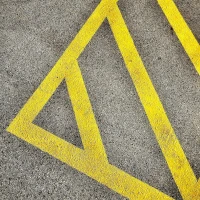The underwater world offers an environment unlike any other. To explore the depths and mysteries that lie beneath the surface is an aspiration many hold dear, yet diving into this serene yet alien realm presents unique challenges. One such challenge is the critical process of equalization—a core skill for divers of all levels. Let’s dive deep into the world of diving and unravel the secrets of equalizing pressure effectively to ensure a safe and enjoyable underwater adventure.
The Essence of Equalization in Diving
When we dive into the waters, pressure increases dramatically, affecting our body’s air-filled spaces, particularly our ears and sinuses. The art of equalization balances the pressure in these spaces with the surrounding water pressure. Neglecting proper equalization techniques can lead to discomfort and even injury, but with the right approach, you can ensure a smooth descent into the underwater kingdom.
Understanding Pressure Changes Underwater
As you descend, the weight of the water above you increases, leading to increased pressure. This phenomenon, known as Boyle’s Law, illustrates the inverse relationship between volume and pressure beautiful pain eminem lyrics. Divers must understand this principle to prevent barotrauma caused by pressure differences between the inside and outside of air-filled spaces.
The Risk of Barotrauma
Barotrauma occurs when the body’s tissues are damaged due to pressure discrepancies. In diving, this commonly affects the ears and sinuses. Symptoms can range from mild discomfort to severe pain and disorientation, not to mention the potential long-term effects on hearing and sinus function.
Proven Equalization Techniques for Divers
To safeguard against barotrauma, divers must utilize equalization techniques. Here’s a closer look at some of the most effective methods.
The Valsalva Maneuver
The Valsalva Maneuver is a foundational technique in which a diver pinches their nose and gently blows, creating pressure that opens the Eustachian tubes to equalize.
- Pros:
- Simple and quick to perform.
- Commonly taught to beginner divers.
- Cons:
- Can become less effective at greater depths.
- Potential to overdo it and cause damage.
Toynbee Maneuver
This technique involves pinching the nose and swallowing, which helps open the Eustachian tubes via the action of the throat muscles.
- Pros:
- Less forceful than the Valsalva.
- Useful for divers who have difficulty with the Valsalva Maneuver.
- Cons:
- Since it requires swallowing, some divers find it less intuitive while underwater.
Frenzel Maneuver
Advanced divers often use the Frenzel Maneuver, where they pinch their nose and make a “k” sound, using the tongue to force air upward.
- Pros:
- Controlled and gentle on the ears.
- Effective at greater depths.
- Cons:
- Can be difficult to learn and master.
Tip: Divers often prefer the Frenzel Maneuver for its gentleness, especially at greater depths where the Valsalva Maneuver may become less effective.
Real-World Equalization: Stories from Seasoned Divers
Listening to experiences from seasoned divers provides invaluable insights into the world of equalization. Many recount the learning curve associated with mastering these techniques, highlighting the importance of patience and practice.
Tales of Trials and Triumphs
- The Challenge: One diver shares their initial struggle with the Valsalva Maneuver, often experiencing discomfort in the first few meters of descent.
- The Success: After switching to the Frenzel Maneuver and practicing on dry land, this diver now descends with ease, able to equalize efficiently and with less effort.
Equalization Comparison: Methods Side by Side
| Technique | Description | Pros | Cons |
|---|---|---|---|
| Valsalva | Pinch nose, gently blow. | Quick and simple. | Less effective at depth, easy to overdo. |
| Toynbee | Pinch nose, swallow. | Gentle, can be intuitive. | Requires swallowing, less intuitive under water. |
| Frenzel | Pinch nose, make “k” sound. | Gentle, great depth effectivity. | Requires practice to master. |
Note: Divers typically find a preferred method through trial and error, often influenced by their physical comfort and the nature of the dive.
Customizing Your Approach: Tailoring Techniques to Divers’ Needs
Not every diver is the same, and neither is every dive. Customization is key when deciding on the proper equalization technique.
Understanding Your Body’s Response
- Be attentive: Pay attention to how your body reacts to different techniques and conditions.
- Know your limits: Recognize when a technique is not working so you can switch to another.
Factors Impacting Equalization
- Depth: Deeper dives may require more advanced methods like the Frenzel Maneuver.
- Physical Conditions: Congestion or anatomical variances can affect which technique works best.
Adaptation for Different Dive Environments
Whether diving in warm, tropical waters or undertaking a cold-water wreck dive, the environment can dictate the most effective equalization method. In cold water, for instance, vasoconstriction might make equalization slightly more challenging.
Training and Practice: The Path to Equalization Expertise
Developing expert equalization capability demands persistent training and practice. There are exercises you can undertake, even on land, to refine your technique.
Land-Based Exercises
- Eustachian tube massage: Regularly massage the throat area to promote Eustachian tube function.
- Practice maneuvers: Perform your chosen equalization technique throughout the day to build muscle memory.
Dry Runs and Shallow Water Practice
Frequent dry runs and practice in shallow water allow for a safer and more controlled environment to hone your skills, before moving to greater depths.
Equalization Challenges and Solutions
Even experienced divers occasionally face equalization issues. Recognizing and solving these challenges quickly is essential for a safe dive.
Common Problems and their Remedies
- Difficulty equalizing: Try ascending a few feet and attempt equalizing again.
- Congestion: Avoid diving when congested, or use a nasal decongestant if advised by a doctor.
Advanced Techniques for Stubborn Ears
For some divers, their “stubborn ears” necessitate alternative methods like the Lowry Technique, which combines the Valsalva and Toynbee maneuvers for increased effectiveness.
Best Practices for Safe and Effective Equalization
Here are the best practices that seasoned divers follow to ensure safe and effective equalization:
- Start equalizing early and often, even before descent.
- Ascend slightly if issues arise, and attempt to equalize again.
- Avoid diving when experiencing cold, allergy, or sinus issues.
The Role of Equipment in Equalization
Choosing the right equipment can aid in the equalization process. A properly fitting mask and the use of vents or valves can sometimes enhance comfort and effectiveness.
Selecting the Right Mask
Your dive mask should provide a comfortable seal without applying undue pressure on the face, ensuring that any changes in pressure don’t interfere with equalization efforts.
Diving Masks with Purge Valves
Some divers prefer masks equipped with purge valves which can facilitate the process of equalization by allowing excess water to be expelled without removing the mask, maintaining better pressure equilibrium.
Equalization: A Symptom of A Bigger Picture in Diving Safety
Mastering the art and science of equalization isn’t just about comfort—it’s a vital component of overall diving safety. A solid understanding and proficient application of equalization techniques underscore a diver’s preparedness and respect for the underwater environment.
Integrating Equalization into Your Dive Planning
Including equalization practice in your dive routines and pre-dive checklists can ensure that you’re always prepared for the pressures below.
Continuous Learning and Dive Skill Enhancement
By continuously learning and practicing, divers can enhance their overall dive skills, making each underwater excursion safer and more enjoyable.
The Takeaway: Equalization as a Gateway to Underwater Exploration
Equalization is more than a diving technique; it is the gateway to exploring the wonders of the underwater realm. By mastering various tricks and techniques, divers open up new opportunities to experience the beauty and tranquility that only diving can provide. Whether you’re a seasoned pro or a novice, equalization is a skill that requires attention, practice, and respect. Remember to be patient with your own progress, ensure you’re in good health before a dive, and seek professional guidance if necessary. With the right approach to equalization, the vast oceans will become a playground of endless discovery.
Take the plunge, equalize with ease, and embrace the majestic world that awaits beneath the waves. Your adventure is just a breath away.










